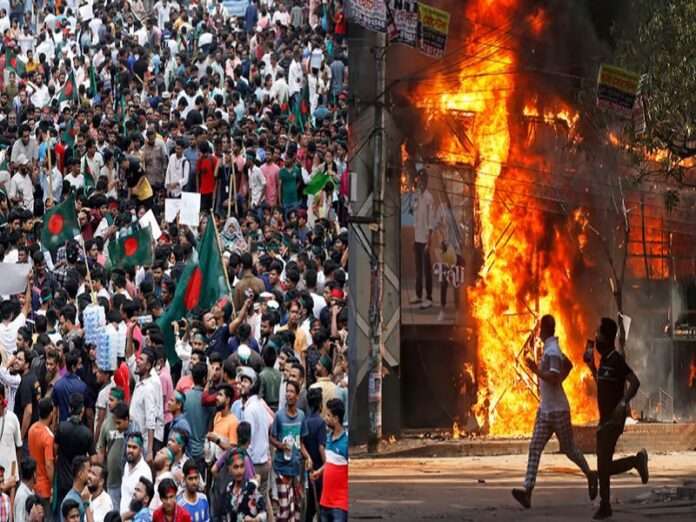It was assessed less than two weeks ago that “The Unrest In Bangladesh Isn’t A Color Revolution But It Could Still Easily Become One”, which is precisely what’s unfolded in the time since. The indigenous student-led protest movement got what it initially wanted after the Supreme Court slashed their hated government job quotas like they demanded, yet the unrest has worsened. It evolved into a full-blown Color Revolution characterized by a spree of urban terrorism carried out by a motley group of rioters.
Some students are still involved in the movement that they created in early June after the courts re-established the aforementioned quota system following a several-year-long hiatus, which was ultimately slashed as was written above, but they now also involve radical opposition members and criminals. Their latest demand is the resignation of newly re-elected Prime Minister Sheikh Hasina, who’s serving an historic fourth consecutive term after January’s elections, thus making this a regime change movement.
Indian analyst Surya Kanegaonkar summarized the sequence of events in an informative tweet here on Sunday, which aligns with the insight mentioned in the introduction’s hyperlinked analysis but importantly builds upon it by adding more details about the US’ modus operandi. He also referred folks to Aayushi Rana’s article from the same day titled “Fake Voices Fuel Real Fury: Ulterior Motives Of Foreign Entities in Bangladesh Student Protests”, which is well worth reading together with his tweet.
The gist is that a combination of sanctions against the ruling party, radical opposition-connected social media influencers, bots, fake news, and Western-cultivated local activists were weaponized to punish Hasina for her foreign policy and advance the goal of carving out a Christian proxy state. The latter is unlikely due to the security services’ resilience and that of their state, but that doesn’t mean that the US still won’t try to implement its geopolitical project at the strategic juncture of South and Southeast Asia.
As the violence continues, more targeted sanctions against the ruling party are likely, and they might grow to sectoral ones too if the US decides to weaponize its large-scale import of Bangladeshi textiles to provoke an economic crisis for radicalizing more members of society against the government. There’s also the chance that the radical opposition might resort to traditional terrorist attacks like bombings to maximize chaos amidst their ongoing spree of urban terrorism in the streets against police and Hindus.
The implications of this worst-case scenario for India are that more people might try to flee across the border, thus worsening tensions between the local population and newcomers, which has been a problem in parts of India for a while already. Moreover, the global media spotlight on that humanitarian aspect of the Bangladeshi Crisis could serve to further smear India’s reputation in the West, thus complementing the existing efforts that were driven by last year’s speculative assassination scandal.
Understood in this way, the Hybrid War on Bangladesh is actually part of the broader Hybrid War on India that’s being waged by the US’ ruling liberal–globalists for ideological reasons, whose goals contradict those of their conservative-nationalist policymaking rivals who respect India as a partner. The implications are immense and it’s that Indian Prime Minister Narendra Modi might be forced to toughen his stance towards the West despite his intentions to normalize and subsequently expand relations.
It’s impossible at this point to predict exactly what’ll happen next in Bangladesh other than to reaffirm the unlikelihood of this full-blown regime change plot succeeding. There’ll likely be a lot more blood spilled before everything is over, whenever that might be, and it’s possible that the country is entering a very dark phase that might last for some time. Nevertheless, Bangladesh can always depend on its close Indian and Russian partners, whose support will help it weather this Western-incited Hybrid War.







